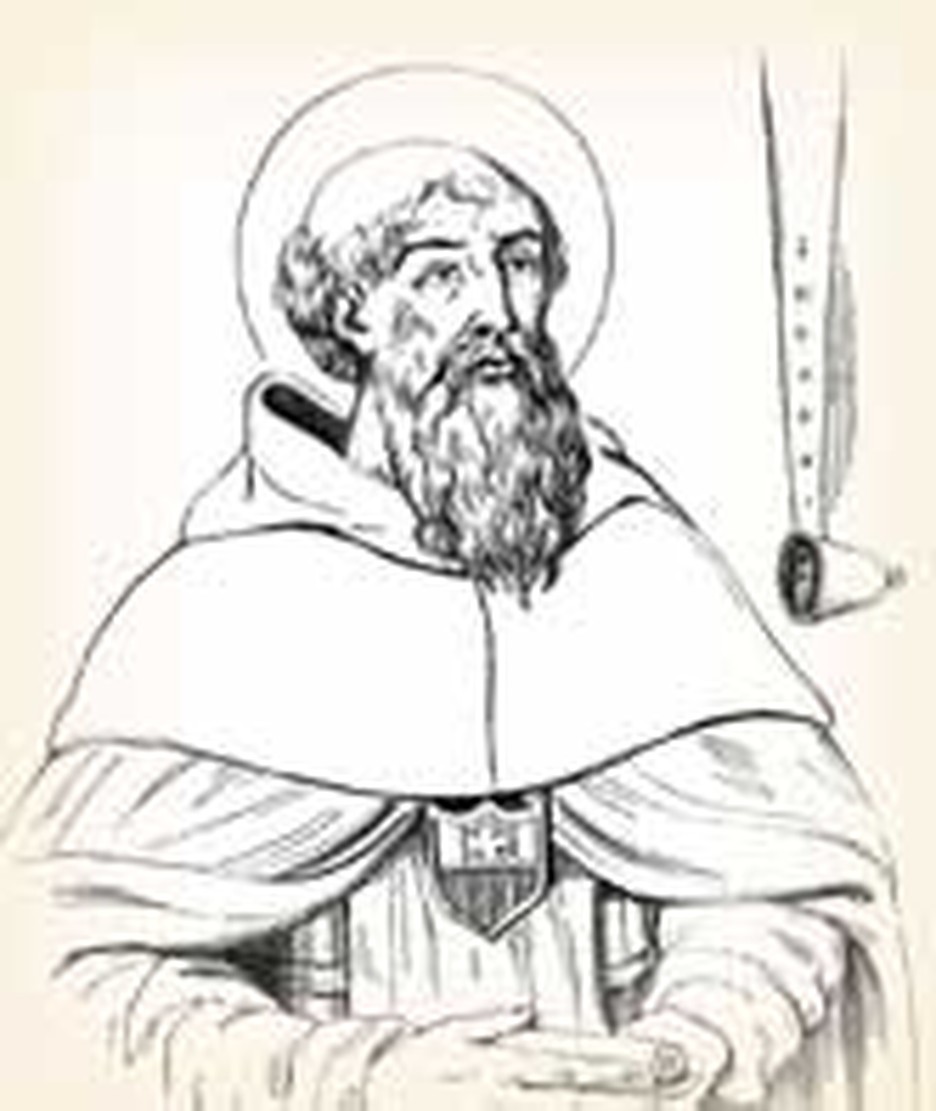
From the first there was something unusual about Raymond Nonnatus. His very name proved it. "Nonnatus" means "Not born." Raymond's mother died while he was still in her womb; he was taken out of her dead body and survived.
Growing up in the fervor of 13th-century Spanish faith, this child of Catalonia was preoccupied with spiritual interests. His father feared to lose him to the church and sent him to tend sheep on a country farm. Raymond did not see this as a setback to his desires. Instead, he gladly fell in with the plan. It promised him opportunity to meditate. When he found a ruin that had once been occupied by hermits, he made it a chapel for his prayers and his wrestlings with Satan. However, the Virgin Mary, whom he had taken as a surrogate mother, was more in his thoughts than Christ.
Spain was partly controlled by Islamic Moors, who enslaved many Christians not only in Spanish provinces but across the Mediterranean in North Africa. Peter Nolasco founded the order of Mercedarians to assist Christian captives. His concern was that they not lose spiritual hope while suffering harsh captivity. Raymond found himself in sympathy with Peter's aims.
The Count of Cardona persuaded Raymond's father to allow his son to join the Mercedarians. Raymond made such spiritual progress in three years that he was sent to the Barbary Coast, North Africa, as an agent of the order to purchase slaves back from the Moors.
After using up all his money, Peter showed that the true spirit of Christ burned in him when he offered himself as a hostage so that other Christians might go free. He would be released when more ransom money came to pay for the freed slaves. The fact that he voluntarily took the place of badly treated slaves made the Moors furious. Perhaps it pricked their consciences. At any rate, they heaped cruel treatment on him. However, the men who were to profit from the ransom, urged restraint. They were afraid the hostage would die and they would never get paid.
Consequently, Raymond was given considerable freedom. He moved about, comforting other slaves. He also converted and baptized some Moors. This so angered the local Islamic ruler he ordered that Raymond be impaled. Had the order been carried out, Raymond would have been planted in the ground on the end of a sharp pole. Again the men waiting for their ransom money saved Raymond's life. However, he was severely beaten, and his lips were burned, pierced with holes and padlocked.
Finally the ransom arrived. Raymond wanted to remain in Barbary in order to ransom more captives, but his superior ordered him home. Pope Gregory IX was so impressed that he nominated Raymond to a cardinalship. The honor meant little to the saint. He continued to live as simply as ever. The Pope ordered him to Rome. Raymond set out. He had gone only six miles when he fell ill with fever in Cardona, Spain. On this day, August 31, 1240, Raymond breathed his last. Those who were privileged to tend him in his final moments said his face became as bright as an angel's.
Bibliography:
- Baring-Gould, S. Lives of the Saints. Edinburgh: John Grant, 1914, source of image.
- Butler, Alban. Lives of the Saints. Various editions.
- Mershman, Francis. "St. Raymond Nonnatus." The Catholic Encyclopedia. New York: Robert Appleton, 1914.
- "Raymond Nonnatus, St." The Oxford Dictionary of the Christian Church. Edited by F. L. Cross and E. A. Livingstone. Oxford, 1997.
- Various internet articles.
Last updated June, 2007

.png)
